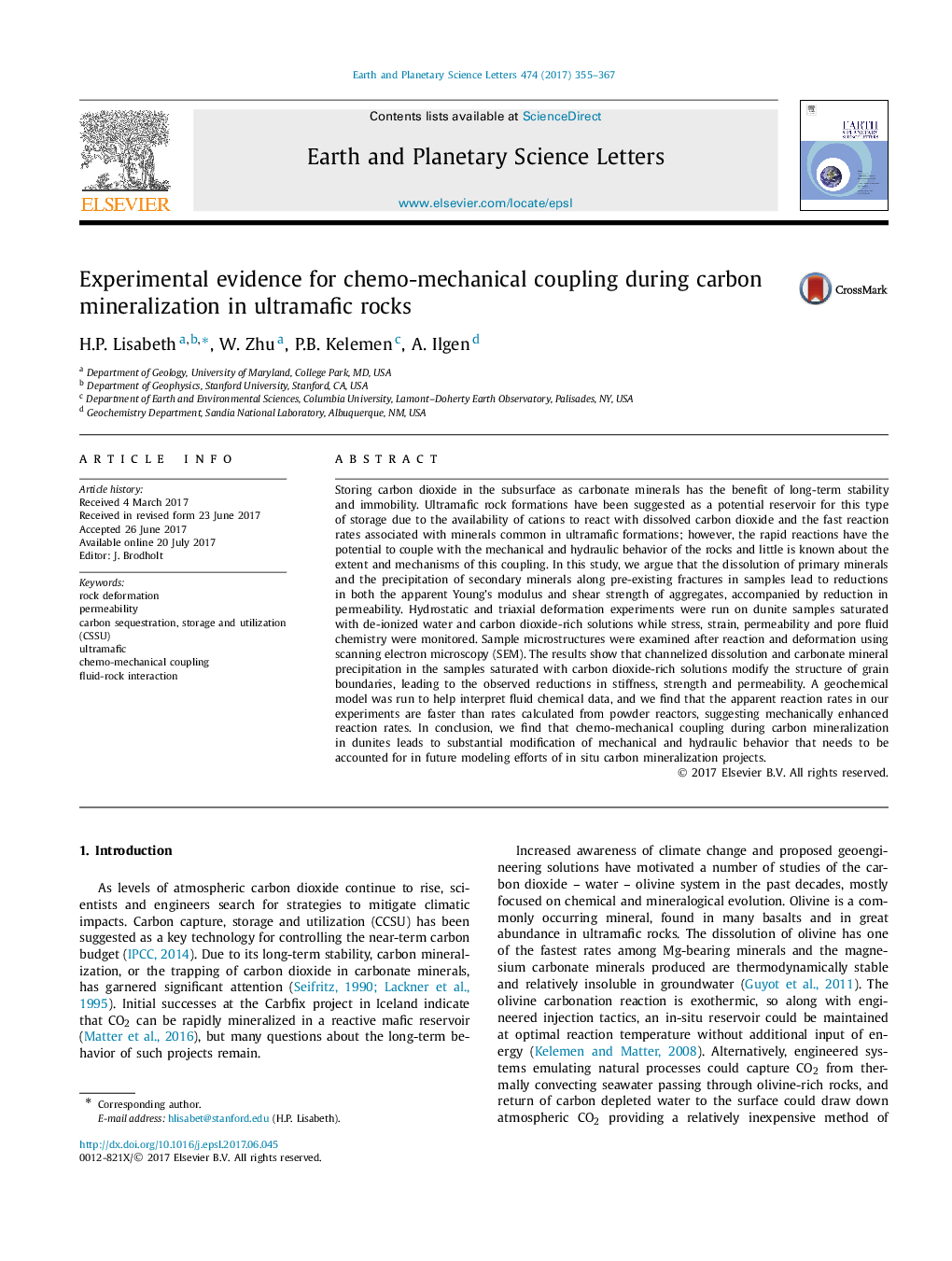| کد مقاله | کد نشریه | سال انتشار | مقاله انگلیسی | نسخه تمام متن |
|---|---|---|---|---|
| 5779745 | 1634682 | 2017 | 13 صفحه PDF | دانلود رایگان |
- Deformation experiments run on carbonic acid-saturated dunites.
- Magnesite and serpentine precipitated in pore space.
- Reaction reduces strength, Young's modulus and permeability.
- Olivine dissolution rate increased by mechanical stress.
Storing carbon dioxide in the subsurface as carbonate minerals has the benefit of long-term stability and immobility. Ultramafic rock formations have been suggested as a potential reservoir for this type of storage due to the availability of cations to react with dissolved carbon dioxide and the fast reaction rates associated with minerals common in ultramafic formations; however, the rapid reactions have the potential to couple with the mechanical and hydraulic behavior of the rocks and little is known about the extent and mechanisms of this coupling. In this study, we argue that the dissolution of primary minerals and the precipitation of secondary minerals along pre-existing fractures in samples lead to reductions in both the apparent Young's modulus and shear strength of aggregates, accompanied by reduction in permeability. Hydrostatic and triaxial deformation experiments were run on dunite samples saturated with de-ionized water and carbon dioxide-rich solutions while stress, strain, permeability and pore fluid chemistry were monitored. Sample microstructures were examined after reaction and deformation using scanning electron microscopy (SEM). The results show that channelized dissolution and carbonate mineral precipitation in the samples saturated with carbon dioxide-rich solutions modify the structure of grain boundaries, leading to the observed reductions in stiffness, strength and permeability. A geochemical model was run to help interpret fluid chemical data, and we find that the apparent reaction rates in our experiments are faster than rates calculated from powder reactors, suggesting mechanically enhanced reaction rates. In conclusion, we find that chemo-mechanical coupling during carbon mineralization in dunites leads to substantial modification of mechanical and hydraulic behavior that needs to be accounted for in future modeling efforts of in situ carbon mineralization projects.
120
Journal: Earth and Planetary Science Letters - Volume 474, 15 September 2017, Pages 355-367
